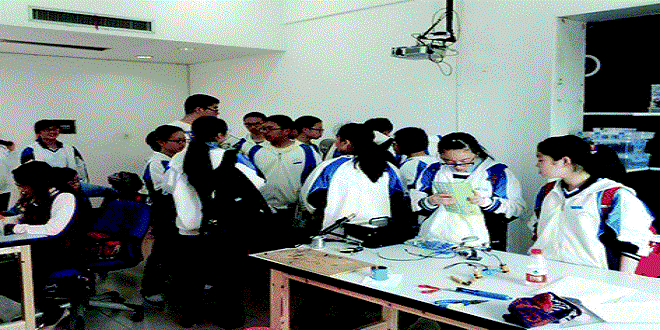ICT Supported Instructional Innovative Practice and Diffusion Mechanism of K-12 in China

Abstract With the rapid development of technology and society, each country has emerged more innovative instructional practices in K-12 using new Information Communications and Technologies (ICTs). As an important representative, China has a long history of exploring and reforming the instruction. In recent years, there are lots of innovative instructional practices emerging with the development of ICT in education in China. The experiences of innovative practice, including the approach of innovation and diffusion model are important for every country.
In this chapter, we analyze some typical instructional practices and relative models in China from eight approaches of instructional innovations which can be classified as three main missions: to realize education equality, to promote teaching quality, and to cultivate creative ability. It can be found that all these innovative instructional practices are combined with characteristics of the educational organization system of China and there are several influence factors for these innovative instructional practices, including government-supported educational institutions and enterprise, experimental team in school, technological innovation and educational needs, etc.
Therefore, this chapter extracts typical educational innovative diffusion mechanism in China, which can be used as reference of ideas and inspiration in practice for other countries.
Development of ICT Supported Instructional Practice in China
Along with the process of social transition, educational transformation, and spreading of ICT in society, the development of ICT in education in China mirrors its international development. If we consider the proclamation that “computer education should start from children” by Deng Hsiao-ping as the starting point of ICT in education in China, it can be divided into four phases.
Instruction of computing as a discipline starting from the end of 1970s, (2) Computer assisted instruction and management starting from the middle and late 1980s, (3) national initiatives focused on ICT construction of infrastructure in education since late 1990s, (4) national projects of ICT in education focused on improving capacity of using ICT since 2005.
Research Framework
The needs for innovative education coming from economic and social development become increasingly urgent, and require suitable measures of reforming from the aspect of instructional process, teaching mode, instructional structure, teaching method, learning content, etc. As the influence of ICT in education has become increasingly obvious, it also has different levels of influence on the educational innovation at the same time. Innovative instruction practice is the core of education reform; the traditional education is mainly about teachers’ knowledge transformation while the new teaching mode is given priority in the learning process.
There are many factors related to implement successfully an innovative instruction. According to the framework with eight dimensions of innovative instruction, this paper choose some typical representative cases from the excellent cases which are collected with reliable information during UNESCO’s Conference on ICT and Post2015 Education
The Female Delusion Calculator is a viral phenomenon that has gained traction on social media. It originated as a satirical tool to challenge unrealistic beauty standards and has sparked widespread controversy. The calculator aims to shed light on the societal pressures faced by women and the impact of these expectations on their self-image. Public reaction to the Female Delusion Calculator has been mixed, with some praising its message and others criticizing it for perpetuating negative stereotypes. The controversy surrounding the calculator has sparked important conversations about body positivity and the need for more inclusive representations of beauty in the media.



